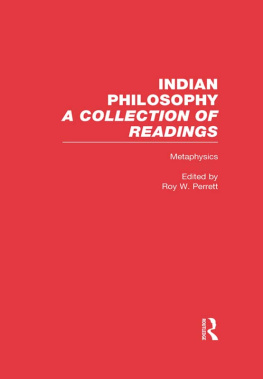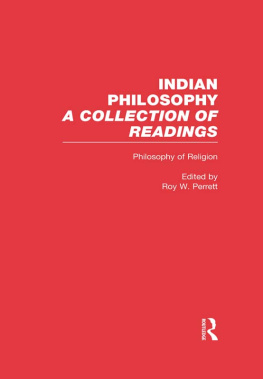Brett Carroll - The Routledge Historical Atlas of Religion in America
Here you can read online Brett Carroll - The Routledge Historical Atlas of Religion in America full text of the book (entire story) in english for free. Download pdf and epub, get meaning, cover and reviews about this ebook. year: 2000, publisher: Routledge, genre: Romance novel. Description of the work, (preface) as well as reviews are available. Best literature library LitArk.com created for fans of good reading and offers a wide selection of genres:
Romance novel
Science fiction
Adventure
Detective
Science
History
Home and family
Prose
Art
Politics
Computer
Non-fiction
Religion
Business
Children
Humor
Choose a favorite category and find really read worthwhile books. Enjoy immersion in the world of imagination, feel the emotions of the characters or learn something new for yourself, make an fascinating discovery.
- Book:The Routledge Historical Atlas of Religion in America
- Author:
- Publisher:Routledge
- Genre:
- Year:2000
- Rating:3 / 5
- Favourites:Add to favourites
- Your mark:
- 60
- 1
- 2
- 3
- 4
- 5
The Routledge Historical Atlas of Religion in America: summary, description and annotation
We offer to read an annotation, description, summary or preface (depends on what the author of the book "The Routledge Historical Atlas of Religion in America" wrote himself). If you haven't found the necessary information about the book — write in the comments, we will try to find it.
The Routledge Historical Atlas of Religion in America — read online for free the complete book (whole text) full work
Below is the text of the book, divided by pages. System saving the place of the last page read, allows you to conveniently read the book "The Routledge Historical Atlas of Religion in America" online for free, without having to search again every time where you left off. Put a bookmark, and you can go to the page where you finished reading at any time.
Font size:
Interval:
Bookmark:

THE ROUTLEDGE
HISTORICAL ATLAS
OF
RELIGION
IN
AMERICA
Routledge Atlases of American History
Series Editor: Mark C. Carnes
The Routledge Historical Atlas of the American Railroads
John F. Stover
The Routledge Historical Atlas of the American South
Andrew K. Frank
The Routledge Historical Atlas of Women in America
Sandra Opdycke
The Routledge Atlas of African American History
Jonathan Earle
The Routledge Historical Atlas of Presidential Elections
Yanek Mieczkowski
THE ROUTLEDGE
HISTORICAL ATLAS
OF
RELIGION
IN
AMERICA
BRET E. CARROLL
MARK C. CARNES, SERIES EDITOR

Published in 2000 by
Routledge
711 Third Avenue
New York, NY 10017
Published in Great Britain in 2000 by
Routledge
2 Park Square, Milton Park
Abingdon, Oxon OX14 4RN
Routledge is an imprint of the Taylor & Francis Group, an informa business
Text copyright 2000 by Bret E. Carroll
Maps and design 2000 by Arcadia Editions Ltd.
All rights reserved. No part of this book may be reprinted or reproduced or utilized in any form or by any electronic, mechanical, or other means, now known or hereafter invented, including photocopying and recording or in any information storage or retrieval system, without permission in writing from the publishers.
Routledge, Inc. respects international copyrights laws. Any omissions or oversights in the acknowledgments section of this volume are purely unintentional.
Library of Congress Cataloging-in-Publication Data
Carroll, Bret E., 1961
The Routledge historical atlas of religion in America / Bret E. Carroll.
p. cm. (Routledge atlases of American history)
Includes bibliographical references and index.
ISBN 0-415-92131-7 (hardback : alk. Paper) ISBN 0-415-921137-6 (pbk : alk. Paper) I. Ecclesiastical geographyUnited StatesMaps. 2. United StatesChurch historyMaps. 3. United StatesReligionMaps. I. Title: Historical atlas of religion in America.
II. Title. III. Series.
G1201.E4C3 2000
200973022dc21
00-030007 00059192
To Gilbert Carroll (19261973), Judith, and Iris
Contents
As the first Americans wandered into North America from Siberia, across frozen wastes that are now severed by the Bering Strait, they sought guidance about the spirit world from their shamans. John Winthrop regarded the safe passage of the Puritans from England to Massachusetts Bay as proof that God had given them a special commission to carry out His plans in the New World. Brigham Young viewed the Mormon great trek from Nauvoo, Illinois, to the Great Salt Lake Basin as comparable to the exodus of the Hebrews. During the 2000 presidential campaign, Republican George W. Bush named Jesus as his favorite philosopher and declared June 10 Jesus Day in Texas. As if in reply, Democratic candidate Al Gore highlighted the fact that Joseph Lieberman, a practicing Jew, shared Gores belief in God Almighty. This is to observe that the history of America is inseparable from the history of religion in America. An historical atlas of religion in America reveals much about the history of the American people.
But what is an historical atlas of religion? Most historical atlases, including those in the Routledge series, examine phenomena of a physical character: the construction of railroads, canals, factories; the voluntary or forced migration of peoplesimmigrants, Native Americans, slaves; the advance of explorers or the collision of armies. Such activities were geographical in character: for instance moving foodstuffs from the farms of the Midwest to the urban markets in the East; shifting slaves from the exhausted soils of Virginia to the new cotton fields in Mississippi; finding a northwest passage to the Pacific or cutting the Confederacy in two. And because these activities have an explicit geographical dimension, they are easily mapped.
But how does one map ideas about God?
Most atlases avoid this perplexity by equating religion with the institutions of religion. This allows the mapmakers to exploit masses of data on the major religions. These atlases can readily be identified by their ubiquitous dots: some maps depict individual churches, so that the reader will see clusters of green Catholic dots in urban New York and blue Baptist dots in South Carolina, and smatterings of brown Jewish dots for synagogues; other maps, similarly colored, have dots that signify religiously affiliated universities or missions. Much of this familiar data appears in this atlas as well.
But historian Bret E. Carroll is interested in religion as religionideas about God and the nature of belief. He makes use of information on religious institutions in order to illuminate patterns of thought and behavior. He seeks to map the pathways of belief in the American past.
Because new religious ideas were often spawned by solitary religious visionaries or preachers, Carroll at times focuses on such individuals. He thus maps the efforts of Indian prophets of revitalization, ranging from the prophet Pope, who inspired the Pueblo revolt against the Spanish in 1680, to the Paiute visionary, Wovoka, whose transformation of the Ghost Dance alarmed whites and resulted in the massacre of Indians at Wounded Knee in 1890. Carroll shows the routes of celebrated preachers such as George Whitefield during the First Great Awakening of the 1730s and 1740s and of Charles Grandison Finney during the Second Great Awakening a century later. He also depicts activities as varied as the founding of Indian villages by the Puritan missionary John Eliot, the establishment of the Oneidan communes by John Humphrey Noyes, and the blending of eastern and western thought in the Theosophy of the Russian emigrant, Helena Blavatsky.
Carroll understands, further, that religious ideas were spread by groups of people as well as individual preachers or prophets. He locates the multiple origins of American Lutheranism in Sweden, the German Palatinate, and the Netherlands, and tracks its passage, respectively, to the Delaware Valley, the Carolinas, and New York. He shows the origins and merging of voodoo traditions, call-and-response worship, and Christian hymnody among slaves.
Carroll devotes considerable attention to missions, which were often central to the transmission of religious ideas. In addition to the usual accounts of Spanish missionaries in the South and French Jesuits along the upper Mississippi and Great Lakes, Carroll describes the diffusion of Russian Orthodox missions in Alaska and the Northwest, Protestant missionary activities in India and China throughout the 19th century, and even the AME Zion (African-American Protestant) missions to Africa during the last third of the 19th century.
Historical atlases that concentrate on religious institutions contain a built-in bias in favor of the major denominations, which, by virtue of their size and continuity, have generated and preserved the information on which such atlases depend. By treating such matters succinctly, Carroll has reserved far more space to consider the full diversity of religious belief and practice in America. Thus his atlas alone includes maps of such extraordinary range as Eskimo bear rites of neolithic times, the 18th-century migration of the Jews from 17th-century Holland and Brazil, the evolution of the Disciples of Christ in the trans-Appalachian West, the origin and spread of Christian Science, the rise of Malcolm X and the Nation of Islam, and the development of a host of 20th-century faiths ranging from Zen Buddhism, Protestant fundamentalism, Pentecostalism, the Unification Church of Sun Myung Moon, the Scientology of science fiction writer L. Ron Hubbard, and the syncretic Bahai.
Next pageFont size:
Interval:
Bookmark:
Similar books «The Routledge Historical Atlas of Religion in America»
Look at similar books to The Routledge Historical Atlas of Religion in America. We have selected literature similar in name and meaning in the hope of providing readers with more options to find new, interesting, not yet read works.
Discussion, reviews of the book The Routledge Historical Atlas of Religion in America and just readers' own opinions. Leave your comments, write what you think about the work, its meaning or the main characters. Specify what exactly you liked and what you didn't like, and why you think so.






